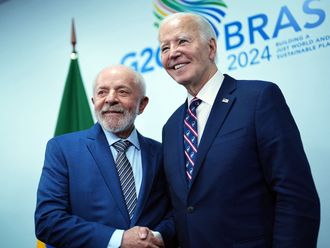Manila: Money sent home by Filipinos abroad reached $5.6 billion (Dh499 billion) during the first quarter of 2013 even as remittances showed less robust growth compared to previous years.
Bangko Sentral ng Pilipinas (Central Bank of the Philippines) Governor Amando Tetangco Jr reported that personal remittances from overseas Filipinos (OFs) went up in March 2013, registering a 3.7 per cent year-on-year growth to reach $1.9 billion. This development, he said, brought the cumulative remittances for the first quarter of 2013 to $5.6 billion, higher by 6.2 per cent than the level registered in the comparable period in 2012.
According to Tetangco, the steady increase in personal remittances during the quarter was driven by robust remittance flows from both land-based OF workers (OFWs) with work contracts of one year or more ($4.2 billion), as well as sea-based workers and land-based workers with short-term contracts, $1.3 billion.
The main sources of remittances during the January-March 2013 period were the US, (42.6 per cent of total cash remittances), Canada (8.2 per cent), Saudi Arabia (7.9 per cent), the United Kingdom (5.7 per cent), the United Arab Emirates (4.5 per cent), Singapore (4.2 per cent), and Japan (3.7 per cent).
Remittances from Filipinos abroad mark an important contribution to the Philippine economy and had enabled the country for years to settle foreign debts.
But while the remittance growth appeared rosy, the overall outlook show less lustre.
Cash remittances coursed through banks rose only three per cent to $1.749 billion - the slowest expansion since August 2009 when remittances grew 2.8 per cent.
According to Tetangco, remittances nevertheless remained strong partly on account of sustained demand for skilled Filipino workers overseas.
Based on the latest reports from the Philippine Overseas Employment Administration (POEA) approved job orders totalled 292,483 in January-April 2013, of which about 27 per cent consisted of processed job orders mainly for services, production, and professional, technical and related workers.
“These processed job orders were largely intended for the manpower requirements of Saudi Arabia, United Arab Emirates, Qatar, Hong Kong, and Kuwait,” he said.












